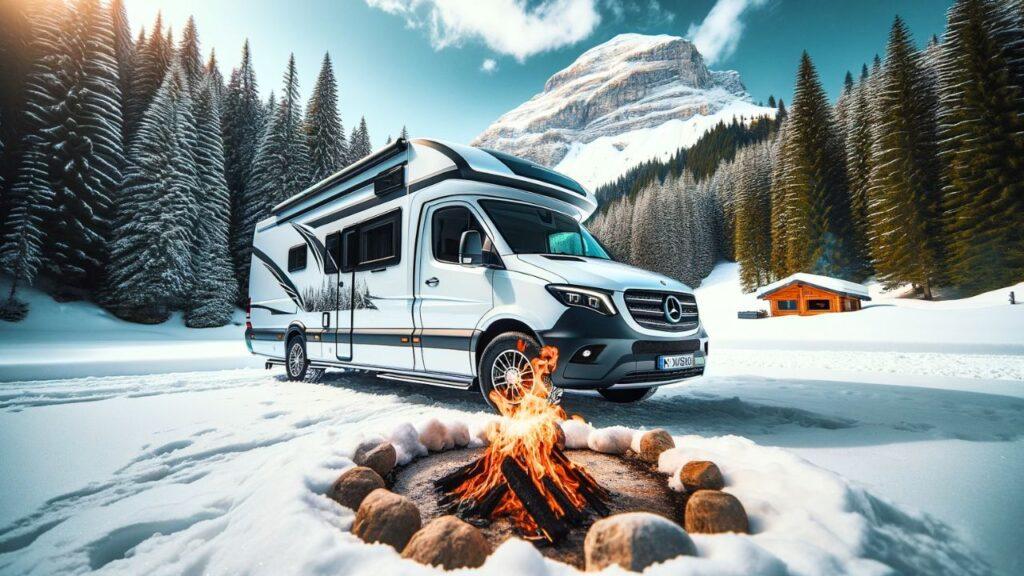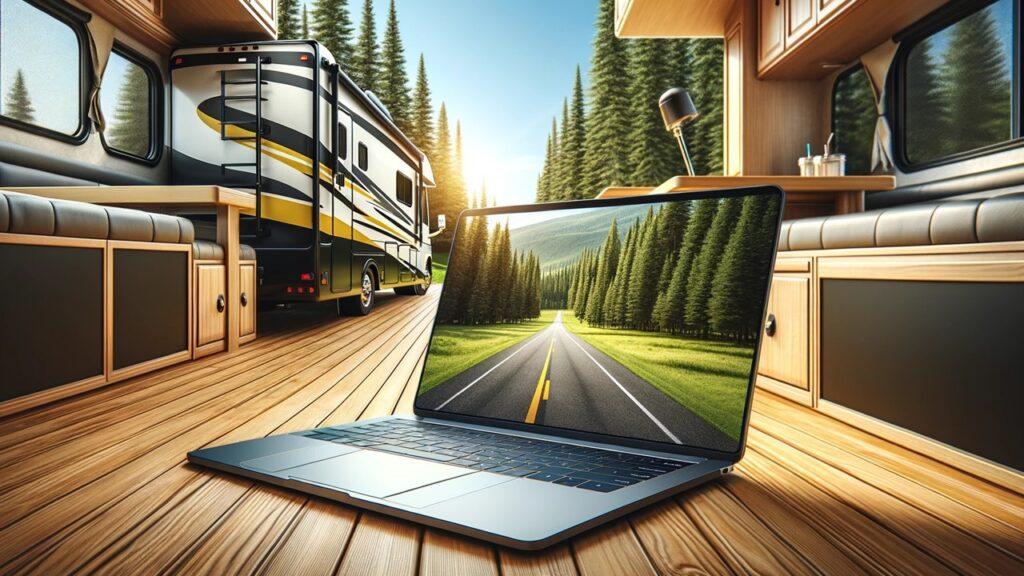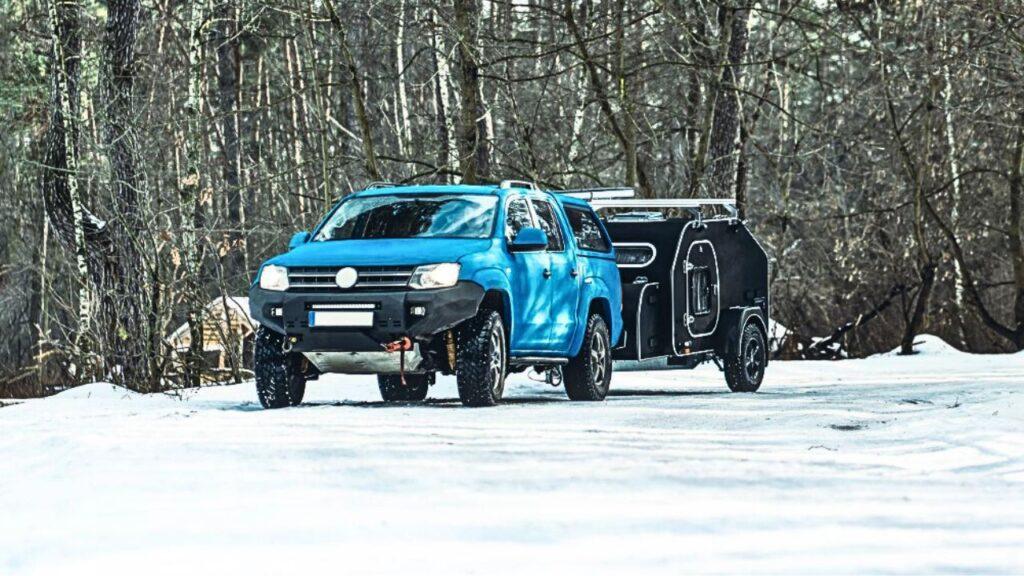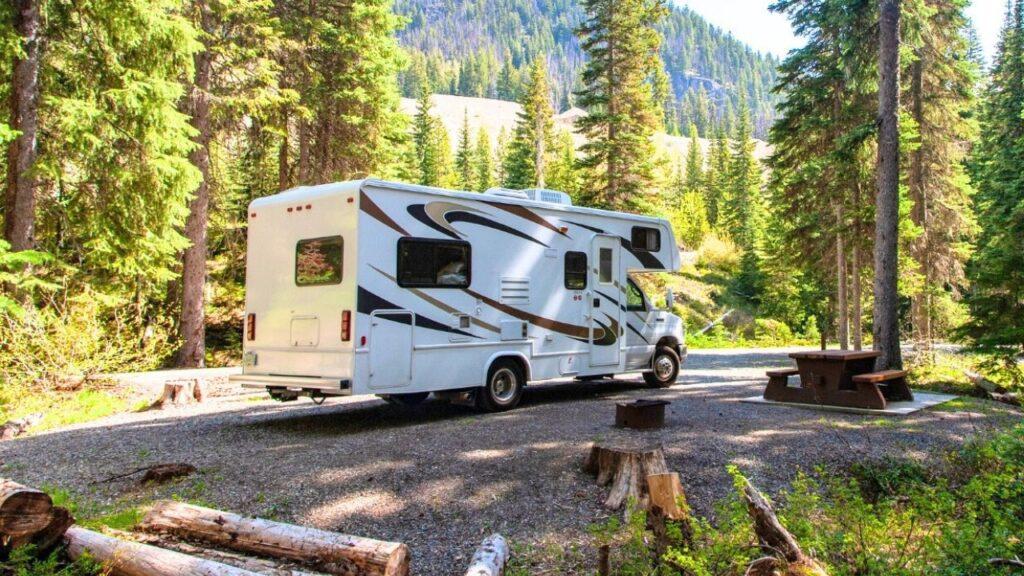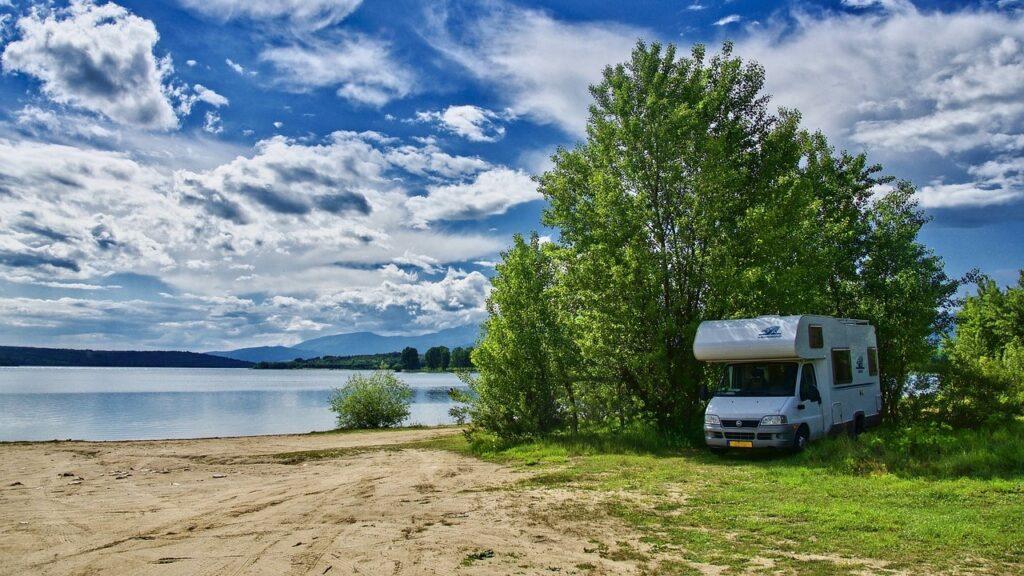
Air conditioning systems in RVs are essential for comfort but often contribute significantly to interior noise, which can detract from the overall enjoyment of your RV experience. Common sources of this noise include the vibration of loose components and the hum of mechanical fans. Furthermore, the design and installation of some systems may amplify these sounds, making quiet moments rare during operation. Reducing this noise not only enhances tranquility inside your RV but also allows for a more serene connection with the natural environments you travel through. Moreover, understanding how to balance cooling needs with energy consumption in RVs can further improve your RV lifestyle by optimizing both comfort and efficiency. By addressing these issues directly and effectively, you can significantly enhance your time spent on the road.
RV Cooling Systems and How They Work
When summer rolls in, maintaining a cool interior in your RV becomes a top priority. Various cooling systems cater to this need, ensuring your comfort on the road. Let’s explore the different types of cooling systems available for your RV to help you maintain an agreeable temperature inside.
Air Conditioners
RV Air conditioners are ubiquitous, functioning much like those found in homes. They employ refrigerant to absorb and expel heat from the air, swiftly lowering temperatures. While highly effective, they can be energy-intensive, demanding careful consideration to balance cooling requirements with energy consumption in RVs. There are also RV non ducted air conditioners and RV non ducted air conditioners as well.
Evaporative Coolers (Swamp Coolers):
Evaporative coolers harness natural evaporation to cool the air. They are more energy-efficient than air conditioners and excel in dry, arid climates. By drawing in hot air and passing it through water-saturated pads, they cool the air before circulating it inside the RV. However, their efficacy diminishes in humid areas, necessitating a thorough evaluation of your travel destinations before opting for this solution.
Vent Fans
Vent fans offer an alternative cooling method for RVs. Installed on the roof or windows, these fans facilitate air circulation throughout the RV, enhancing ventilation. While they don’t actively cool the air like air conditioners or evaporative coolers, they significantly reduce indoor temperatures by improving airflow. Particularly beneficial during cooler periods or in mild climates, their minimal energy consumption makes them an attractive option for balancing cooling needs with energy efficiency in RVs.
Selecting the appropriate cooling system for your RV hinges on factors such as travel plans, climate conditions, and energy demands. By grasping the advantages and limitations of each type, you can make a well-informed decision that ensures your comfort without overly taxing your power resources.
Factors Influencing Cooling Efficiency in RVs
Balancing cooling needs with energy consumption in RVs requires understanding several key factors that influence cooling efficiency. These include insulation, external weather conditions, and the size and layout of your RV. Addressing these elements can significantly enhance your cooling efficiency and reduce energy consumption.
Insulation and Its Impact
Proper insulation is crucial for maintaining cooling efficiency in RVs. Insulation works by reducing the transfer of heat between the inside and outside of your RV. During hot weather, good insulation prevents outside heat from entering, reducing the load on your cooling system. Common materials used for RV insulation include foam boards, spray foam, and reflective barriers.
Foam boards offer excellent thermal resistance and are easy to install in walls, floors, and ceilings. Spray foam insulation provides superior sealing properties that fill gaps and cracks, preventing air leaks. Reflective barriers, such as radiant barriers and reflective bubble wraps, can be installed on windows and other surfaces to reflect radiant heat away from the RV, further enhancing cooling efficiency.
Upgrading your RV’s insulation can have long-term benefits. It not only improves cooling efficiency in the summer but also helps retain heat during the winter. This dual benefit makes it a worthwhile investment for RV owners looking to optimize energy usage year-round.
External Weather Conditions
External weather conditions play a significant role in determining your RV’s cooling needs. In hot and humid climates, the demand for cooling increases as the air conditioner or evaporative cooler works harder to maintain a comfortable temperature. In dry and arid regions, evaporative coolers may perform more efficiently due to lower humidity levels, making them a viable option for energy-efficient cooling.
The time of day and exposure to direct sunlight can also impact cooling efficiency. Parking your RV in a shaded area or using awnings and reflective covers can significantly reduce the interior temperature, decreasing the need for active cooling. RV awnings and RV reflective covers are practical solutions for managing external heat and enhancing cooling efficiency.
Weather forecasting can help you plan your travels and cooling needs. Knowing when to expect hot weather allows you to prepare and adjust your cooling strategies accordingly. This proactive approach helps in balancing cooling needs with energy consumption in RVs, ensuring you stay comfortable without overusing your energy resources.
RV Size and Layout Considerations
The size and layout of your RV significantly influence cooling requirements and energy use. Larger RVs naturally require more cooling power to maintain a comfortable temperature due to the larger interior space. The layout, including the number of rooms and the placement of windows and vents, also affects airflow and cooling efficiency.
In smaller RVs, cooling can be more efficient due to the limited space, but managing heat distribution can be challenging. Properly placed vents and fans can help circulate cool air throughout the RV, ensuring even cooling. RV portable air compressors and fans can be strategically placed to enhance airflow and cooling efficiency.
The design of your RV’s interior also impacts cooling efficiency. Using light-colored materials for interiors can help reflect heat, while dark colors tend to absorb and retain heat. Keeping windows covered during the hottest parts of the day with reflective shades or curtains can also help maintain a cooler interior temperature.
Understanding and addressing the factors that influence cooling efficiency in RVs is essential for optimizing energy consumption. Proper insulation, awareness of external weather conditions, and thoughtful consideration of your RV’s size and layout can all contribute to a more comfortable and energy-efficient RV experience. By taking these factors into account, you can effectively balance cooling needs with energy consumption, ensuring a pleasant and sustainable journey on the road.
Energy-Saving Strategies for RV Cooling
You can keep your RV cool without driving up your energy usage by implementing smart strategies. Here are some essential ways to maximize your cooling system and ensure efficient resource utilization. From setting your thermostat appropriately to timing your system’s operation effectively, these insights will enhance your comfort while conserving energy.
Optimal Use of Thermostats
A straightforward method to conserve energy is by utilizing your thermostat strategically. Opt for a setting that balances comfort and efficiency, typically around 78°F while indoors. When you’re not at home, raise the temperature by a few degrees. This minor tweak can yield significant savings in energy consumption.
Moreover, consider investing in a programmable thermostat. These devices can be set to automatically adjust the temperature based on your schedule. For example, you can set it to cool down the RV just before you return from an outing. This ensures you’re not cooling an empty RV, which is crucial for balancing cooling needs with energy consumption in RVs.
Timing Your Cooling
Timing is everything when it comes to using your RV’s cooling system efficiently. Run your air conditioner during the coolest parts of the day, such as early morning or late evening. This practice reduces the strain on your system since it doesn’t have to work as hard to cool the RV.
Additionally, use fans to circulate air and create a wind-chill effect. Ceiling fans, portable fans, and RV portable air compressors can help distribute cool air more effectively, reducing the need to run your air conditioner constantly. This approach not only enhances comfort but also helps in balancing cooling needs with energy consumption in RVs.
Regular Maintenance Tips
Regular maintenance of your cooling system is essential for efficient operation. Start by cleaning or replacing filters every month during the cooling season. Dirty filters restrict airflow, making your system work harder and use more energy.
Check the evaporator and condenser coils annually and clean them if needed. Coils that are covered in dirt and grime can’t absorb heat as efficiently. Additionally, ensure that the system’s refrigerant levels are correct, as low levels can impair performance and increase energy use.
Inspect the seals around your windows and doors to prevent cool air from escaping. Consider investing in RV awnings and reflective window covers to reduce the heat entering your RV, which eases the load on your cooling system.
Implementing these energy-saving strategies can significantly enhance your RV cooling system’s efficiency. By optimizing thermostat settings, timing your cooling, and performing regular maintenance, you can effectively manage balancing cooling needs with energy consumption in RVs.
Technological Solutions to Enhance Cooling Efficiency
Embracing new technologies can greatly improve your RV’s cooling efficiency. From smart cooling systems to energy-efficient appliances, these advancements can help you stay cool while reducing energy consumption.
Smart Cooling Technologies
Smart cooling technologies are revolutionizing the way we manage temperature control in RVs. Smart thermostats, for instance, allow you to control your RV’s temperature remotely via a smartphone app. This means you can adjust the cooling system while you’re out exploring, ensuring you return to a comfortable RV without wasting energy.
Some smart thermostats also learn your preferences over time and automatically adjust settings for optimal comfort and efficiency. This not only enhances convenience but also plays a significant role in balancing cooling needs with energy consumption in RVs.
Moreover, integrated systems that sync with other smart devices in your RV can optimize energy use even further. For example, these systems can coordinate with RV solar generators to utilize solar power for cooling during peak sunlight hours, reducing reliance on traditional energy sources.
Energy-Efficient Cooling Appliances
Investing in energy-efficient cooling appliances is another effective way to enhance your RV’s cooling efficiency. Look for units with a high Energy Efficiency Ratio (EER) or Seasonal Energy Efficiency Ratio (SEER) ratings. These ratings indicate how efficiently an appliance uses energy.
Energy-efficient models of air conditioners, like RV quiet air conditioners or RV air conditioners with heating and cooling, provide effective cooling with lower energy consumption. RV portable air conditioners with energy-saving modes are also a great option. These units adjust their cooling capacity based on the room’s temperature, ensuring optimal performance while conserving energy.
Additionally, consider appliances that offer multi-functionality. For instance, a combined air conditioner and dehumidifier can help maintain a comfortable indoor environment without the need for separate devices. This reduces overall energy use and simplifies your cooling setup.
Leveraging smart cooling technologies and investing in energy-efficient appliances are excellent strategies for improving your RV’s cooling efficiency. By adopting these solutions, you can achieve better balancing cooling needs with energy consumption in RVs, ensuring a comfortable and eco-friendly RVing experience.
Alternative Cooling Methods for RVs
Sometimes, traditional air conditioning isn’t the best option for keeping your RV cool. Whether you’re looking to save on energy or simply prefer a quieter alternative, there are plenty of ways to stay comfortable without cranking up the AC. Here’s how you can use natural ventilation, shade, reflective materials, and portable cooling options to maintain a pleasant temperature inside your RV.
Natural Ventilation Techniques
Natural ventilation can be a lifesaver when it comes to reducing your reliance on air conditioning. Start by maximizing airflow through your RV. Open windows and roof vents to create cross-ventilation, allowing fresh air to flow in and hot air to escape. Ceiling fans and portable fans can also help circulate air effectively, making the interior feel cooler.
Position your RV to take advantage of natural breezes. Park with the windows facing the wind to enhance airflow. Additionally, using vent covers that allow you to keep roof vents open even during rain can help maintain continuous ventilation without worrying about water damage. These simple steps can make a big difference in maintaining a comfortable temperature, helping in balancing cooling needs with energy consumption in RVs.
Using Shade and Reflective Materials
Shade is your best friend when it comes to keeping your RV cool. Parking under trees or using an RV awning can significantly reduce the amount of heat entering your vehicle. Awnings extend your living space outdoors and provide shaded areas that reduce the heat load on your RV.
Reflective window covers are another excellent way to keep the sun’s heat out. These covers reflect sunlight away from the windows, preventing the interior from heating up. Additionally, applying reflective materials to your RV’s roof can deflect sunlight, further reducing the temperature inside. Using these techniques not only keeps your RV cooler but also reduces the workload on your cooling system, contributing to balancing cooling needs with energy consumption in RVs.
Portable and Solar-Powered Cooling Options
If you’re looking for versatile and energy-efficient cooling solutions, portable and solar-powered fans and coolers are worth considering. Portable fans can be moved around to target specific areas, providing immediate relief where it’s needed most. Some models come with rechargeable batteries, making them convenient for off-grid adventures.
Solar-powered fans and coolers harness the power of the sun, making them an eco-friendly alternative. These devices are perfect for RVers who want to minimize their environmental footprint and reduce reliance on traditional power sources. By incorporating portable and solar-powered options, you can enjoy a cooler RV without significantly increasing your energy consumption.
Alternative cooling methods such as natural ventilation, using shade and reflective materials, and adopting portable and solar-powered options offer practical ways to stay cool. These methods not only enhance comfort but also play a crucial role in balancing cooling needs with energy consumption in RVs.
Practical Steps to Balance Cooling and Energy Consumption in RVs
Achieving a comfortable temperature in your RV while managing energy consumption can seem challenging, but it’s definitely possible. Here’s a comprehensive guide on how to assess your RV’s energy profile, implement energy-efficient practices, and monitor and adjust your usage for optimal results.
Assessing Your RV’s Energy Profile
Before you can make improvements, you need to understand how much energy your RV’s cooling system uses. Start by tracking your energy consumption over a period of time. Use an energy monitor to measure how much power your air conditioner, fans, and other cooling devices consume. This data will give you a clear picture of where your energy is going and help you identify areas for improvement.
Next, evaluate the efficiency of your cooling appliances. Check the Energy Efficiency Ratio (EER) or Seasonal Energy Efficiency Ratio (SEER) ratings of your air conditioners and other devices. Appliances with higher ratings are more efficient and consume less power. By understanding your RV’s energy profile, you can take targeted actions to improve efficiency, contributing to balancing cooling needs with energy consumption in RVs.
Implementing Energy Efficient Practices
Once you have a clear understanding of your energy consumption, it’s time to implement energy-efficient practices. Start by optimizing the use of your cooling appliances. Set your thermostat to a higher temperature when you’re not inside the RV and lower it only when necessary. Use fans to circulate air and create a cooling effect without relying solely on the air conditioner.
Another effective strategy is to invest in energy-efficient appliances. Look for RV air conditioners and fans with high EER or SEER ratings. These units may cost more upfront but will save you money in the long run through reduced energy consumption. Additionally, consider using RV solar generators to power your cooling devices, especially during sunny days. Solar power can significantly reduce your reliance on traditional energy sources and lower your overall energy costs.
Monitoring and Adjusting Usage
Monitoring your energy usage is crucial for maintaining efficiency. Keep an eye on your energy consumption using an energy monitor or smart thermostat. These tools can provide real-time data on your power usage and help you make informed decisions about when to run your cooling appliances.
Adjust your usage based on the data you collect. For instance, if you notice that your energy consumption spikes during certain times of the day, try to limit the use of high-energy appliances during those periods. Instead, run your air conditioner and other cooling devices during off-peak hours when energy demand is lower. This approach can help you save on energy costs and ensure you’re balancing cooling needs with energy consumption in RVs.
Balancing cooling needs with energy consumption in RVs requires a combination of understanding your energy profile, implementing efficient practices, and continuously monitoring and adjusting your usage. By following these steps, you can maintain a comfortable temperature in your RV while keeping energy costs under control.
Wrapping It Up!
Balancing cooling needs with energy consumption in RVs is essential for a comfortable and cost-effective RVing experience. Throughout this guide, we’ve covered various aspects of RV cooling, from understanding how different systems work to exploring energy-saving strategies and alternative cooling methods.
One of the key points we discussed is the importance of using your cooling systems efficiently. By optimizing thermostat settings, timing your cooling, and performing regular maintenance, you can significantly reduce energy consumption. Additionally, natural ventilation, shading, and reflective materials can help keep your RV cool without relying heavily on air conditioning.
We also delved into the technological solutions available for enhancing cooling efficiency. Smart cooling technologies and energy-efficient appliances can greatly reduce your energy usage while keeping your RV comfortable. Embracing these innovations is a smart way to achieve balancing cooling needs with energy consumption in RVs.
Furthermore, comprehending your RV’s energy dynamics and embracing energy-saving practices can yield significant benefits. Consistently monitoring and fine-tuning your energy usage ensures that your cooling systems function efficiently without unnecessary wastage. This proactive stance is pivotal for upholding comfort and sustainability during your travels.
Achieving a harmonious balance between cooling requirements and energy efficiency in RVs entails a blend of astute strategies and pragmatic actions. By optimizing your cooling techniques and integrating energy-saving innovations, you can relish a comfortable RV lifestyle while curbing energy expenses. Remember, a well-cooled RV not only enhances your journey but also contributes to a more eco-conscious way of life on the road.
Related FAQs
When is the optimal time to operate my RV’s air conditioner?
It’s advisable to run your air conditioner in the early morning or late evening for maximum efficiency.
How frequently should I clean or replace the air conditioner filter?
To uphold efficiency, clean or replace the filter monthly during the cooling season.
Do reflective window covers truly have a significant impact?
Yes, they can notably diminish heat infiltration into your RV, resulting in cooler interiors and decreased strain on the AC system.
What are some energy-efficient alternatives to air conditioning?
Natural ventilation, portable fans, and solar-powered coolers serve as excellent low-energy alternatives.
Is investing in a programmable thermostat for my RV worthwhile?
Certainly, as it aids in maintaining optimal temperatures and curbing energy wastage when the RV is unoccupied.

Jack Rivers is a long-time RVer, a husband, and a dad who’s traveled solo and now with his family. He’s learned a lot from years on the road, sometimes the hard way. From quiet mornings parked by the woods to messy evenings with the kids and a busted heater, he’s been through it all. Miles writes to share the real stuff, the small wins, and the lessons that make RV life worth it, no matter who you’re traveling with.
